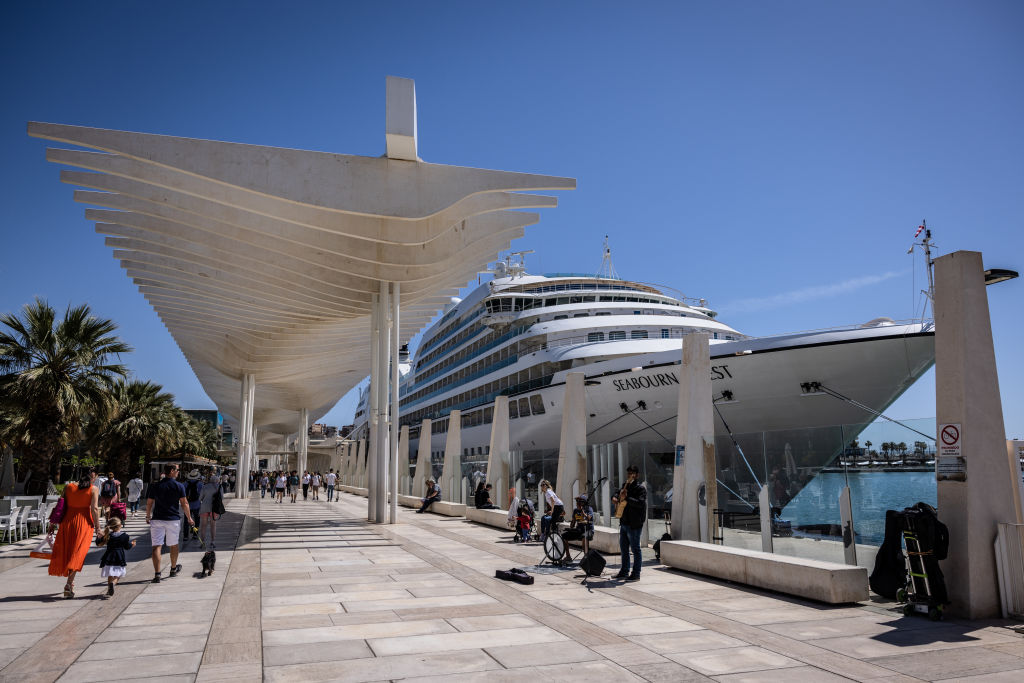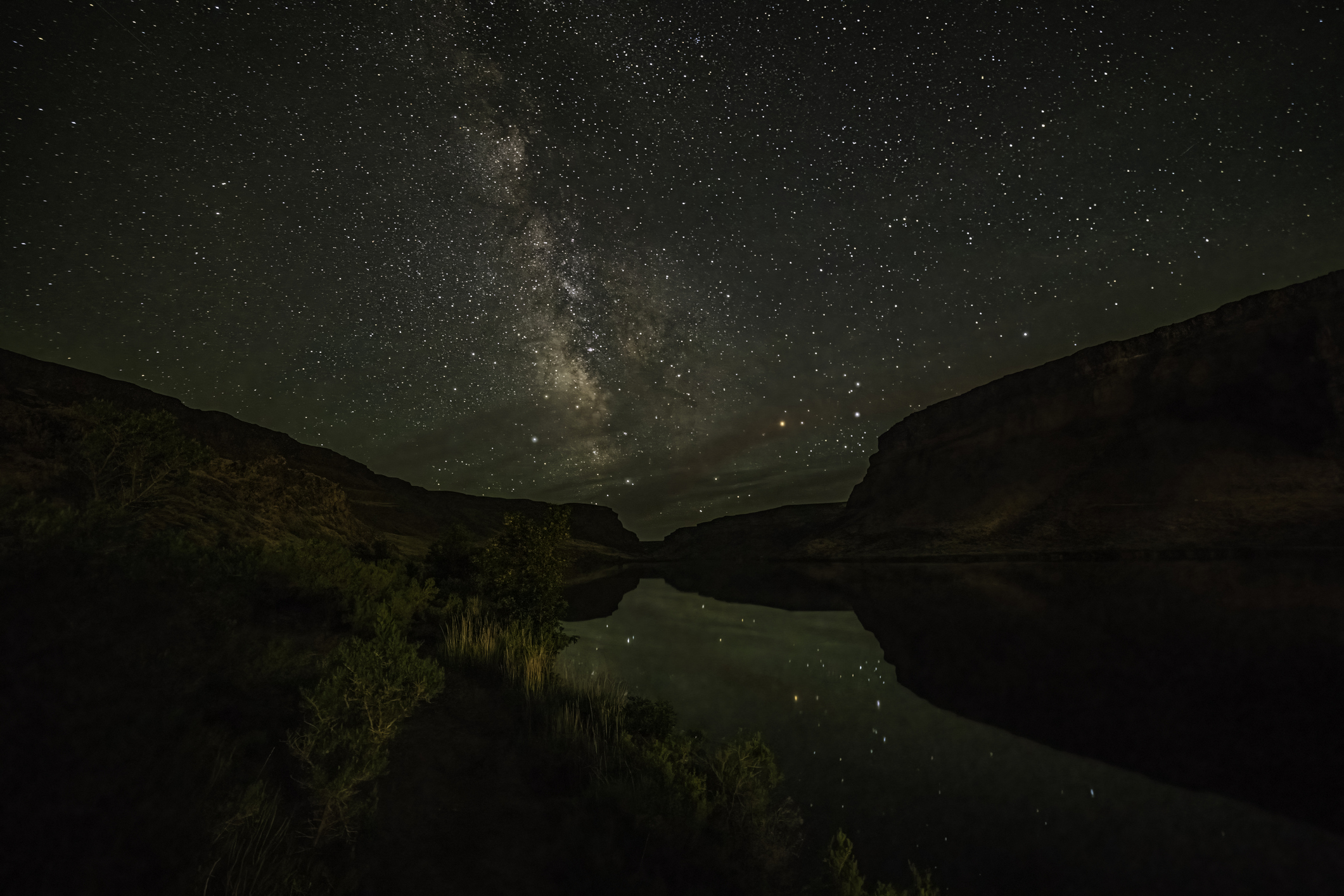Take a Trip With a Curator or Professor
Tours sponsored by museums and universities give travelers access to places not usually available to the typical tourist.
When Dale Mezzacappa turned 60, she celebrated with a two-week trip to India, a place she had always wanted to visit. She traveled with a program sponsored by her alma mater, Vassar College. Leading the group of nearly two dozen alumni and companions two years ago were a retired Vassar political science professor, who is an expert on India, and his wife, who was born in Bengali and taught anthropology at the State University of New York at New Paltz.
The group traveled on trains, air-conditioned buses and by plane. At each stop, they met a local guide who arranged private access to many sites, including the Taj Mahal in Agra.
Mezzacappa and the others also got a behind-the-scenes glimpse of India's culture, talking to local people at every stop. In Delhi, they had dinner at the home of a retired Indian army general who regaled them with stories about his military service. At the India-Pakistan border, they visited the site of the 1919 Amritsar massacre, where British soldiers gunned down hundreds of nonviolent Hindu, Muslim and Sikh protesters.
From just $107.88 $24.99 for Kiplinger Personal Finance
Become a smarter, better informed investor. Subscribe from just $107.88 $24.99, plus get up to 4 Special Issues

Sign up for Kiplinger’s Free Newsletters
Profit and prosper with the best of expert advice on investing, taxes, retirement, personal finance and more - straight to your e-mail.
Profit and prosper with the best of expert advice - straight to your e-mail.
The tour leaders provided a rich learning experience with their knowledge of the history and politics of the region, Mezzacappa says. "It's amazing to go on a trip with a professor who is an expert on the region," says Mezzacappa, who teaches a journalism course at Swarthmore College outside Philadelphia.
Sure, sitting by the beach is nice, but if you'd like to learn a thing or two when you travel, consider taking a trip with a museum, university or a nonprofit educational organization. You can choose a trip that fits any passion, whether it's military history, archeology, food and wine, marine life, or even the Antebellum South.
Like art? You can choose among many gallery tours, but if you're a bit more adventurous, you can join the Virginia Museum of Fine Arts and travel by camel in the Gobi desert to visit artifacts in Mongolia's oldest surviving Buddhist monastery. If you're considering a safari to Tanzania, you could join two zoologists from Chicago's Field Museum and watch the great wildebeest migration. Those who'd like to learn more about all kinds of sea life can travel in March to Baja with a marine expert from the Shedd Aquarium in Chicago.
Educational travel has been growing for years, and it's poised to take off as baby boomers wind down their careers and look to pursue their special interests, says Amy Kotkin, the recently retired director of Smithsonian Journeys (www.smithsonianjourneys.org), which offers 170 study tours a year in the U.S. and globally. "They are passionate lifelong learners who are embarking on a new passion just as they had focused on building their careers and family," she says.
A big attraction of these trips is access to places not usually available to the typical tourist. Museum curators and university professors have built up contacts with experts all over the world, and they can usually offer private tours of art collections or historic sites. "Expert instructors provide behind-the-scenes access and knowledge," says JoAnn Bell, vice-president of programs for RoadScholar (www.roadscholar.org), which offers 5,500 educational programs a year.
Travelers with Smithsonian Journeys' "Insider's Florence," for example, viewed the masterpieces at the Uffizi when the museum was closed to the public and viewed a personal art collection in a private residence. In July, New York City's Metropolitan Museum of Art, which sponsors 35 trips a year, will take travelers on a journey to trace the nomadic culture in Mongolia. One highlight: sleeping under the stars in a ger, or felt-lined circular tent.
Mary-Jeanne Martz, 76, of Arlington, Va., is one of those adventurers seeking a deeper experience. An oil painter and retired government program analyst, she's been on five educational trips since she retired in 2006, including three run by the Smithsonian.
In 2012, Martz went to Cuba with Smithsonian Journeys. The tour leader was an expert on Cuban culture and music, especially the influence of African music on Cuba.
They visited the home and studio of a prominent ceramic artist for a lecture on his work. A local guide also took them to environmental and medical projects. "Everywhere we went, we talked to people," she says. "That was a major objective of the journey—to meet Cubans and talk with them."
[page break]
Although most trips are geared to adults, you can find family tours that make room for grandchildren. Washington and Lee University, in Lexington, Va., offers 17 trips a year, including three that include children under 18. Rob Fure, Washington and Lee's director of special programs, says most travelers are alumni and parents, although anyone can sign up for a trip by joining the alumni association.
On a recent ten-day trip to the Galapagos Islands, there were 25 traveling adventurers, including nine under age 16. "Often grandparents are the ones taking the trip with a young person because their parents are working," Fure says. (For more on traveling with grandchildren, read Take a Road Trip With Your Grandkids.)
Travelers on a safari adventure to Zambia in 2011 with the University of Washington in Seattle took their adventure one step further. The 18 travelers, all 65 or older, were so moved by what they saw that they adopted a village, says Pauline Ranieri, director of the university's alumni tours. Each year since then, travelers on the university's Zambia trip have made donations to the village, which is located close to the safari. Donations have included desks, medicine to cure ringworm and a refrigerator to store the medicine.
Choosing a Travel Program
Finding the right tour can take some digging. There are well-known educational tour outfits, such as RoadScholar, where participants range in age from 40 to 95. Most major museums, such as the Art Institute of Chicago and the American Museum of Natural History in New York City, offer travel programs. So do organizations such as the World Wildlife Foundation, the National Trust for Historic Preservation and National Geographic Expeditions.
If you have a particular interest, check out a specialized museum or educational group. Birdwatchers can consider a trip with the Massachusetts Audubon Society, which offers 40 birding tours a year. You'll travel with naturalists and a dozen or so other birdwatchers to places as far-flung as Bhutan, Arctic Norway, Belize—and New Mexico. "The majority of our travelers are over age 60," says Karen O'Neil, travel and development director for the Massachusetts Audubon Society.
These trips combine birdwatching and general touring. In a trip last year to Panama, for example, travelers saw 218 species of birds, but they also toured historic parts of Panama City and visited a local market.
Also check out your college alumni association—or look at the travel programs for other colleges. In many cases, you don't have to be a graduate of the school, but you will need to join the association to take a trip.
Some tours are more strenuous than others, so check the tour's Web site or call the travel director for information on the level of activity the trip requires. One program with the Metropolitan Museum of Art was described as involving "extensive walking over uneven surfaces, climbing stairs without handrails at locations that are not handicapped accessible."
Before you sign up, take a close look at the program's itinerary to make sure the details appeal. Every tour has a contact person who can answer questions and connect would-be travelers to someone who has already taken the same or similar trip. Look into short-term medical and travel insurance. Many of the programs will offer insurance for an extra price. Find out if you can get a refund if you have to cancel the trip at the last minute or cut your trip short for any reason.
Ask about any extra costs. These trips can be pricey, and airfare and other costs may not be included. Mezzacappa's adventure to India cost $6,000, without airfare. The University of Washington’s two-week trip to Zambia cost $7,500, including airfare. For cheaper trips, stay stateside or look for bargains. Smithsonian Journeys offers one-week trips to Paris or Prague, for $3,500, including airfare.
Profit and prosper with the best of Kiplinger's advice on investing, taxes, retirement, personal finance and much more. Delivered daily. Enter your email in the box and click Sign Me Up.
-
 How to Safely Open an Online Savings Account
How to Safely Open an Online Savings AccountOnline banks offer generous APYs that most brick-and-mortar banks can't match. If you want to make the switch to online but have been hesitant, I'll show you how to do it safely.
-
 7 Ways to Age Gracefully Like the Best Stock Photo Seniors
7 Ways to Age Gracefully Like the Best Stock Photo SeniorsAs a retirement editor, I've gleaned valuable wisdom (and a lot of laughs) from one older couple that tops the seniors' stock photo charts.
-
 My First $1 Million: Banking Executive, 48, Southeast U.S.
My First $1 Million: Banking Executive, 48, Southeast U.S.Ever wonder how someone who's made a million dollars or more did it? Kiplinger's My First $1 Million series uncovers the answers.
-
 9 Types of Insurance You Probably Don't Need
9 Types of Insurance You Probably Don't NeedFinancial Planning If you're paying for these types of insurance, you may be wasting your money. Here's what you need to know.
-
 Why It's Worth Booking a Winter Vacation
Why It's Worth Booking a Winter VacationTravel Smart In the early months of the year, travel demand dips — and so do prices.
-
 5 Ways to Save on a Trip to the 2026 Olympics in Italy
5 Ways to Save on a Trip to the 2026 Olympics in ItalyA guide to going to the Milan-Cortina 2026 Winter Olympics without breaking the bank.
-
 The Best (and Worst) Airlines for Flight Delays and Cancellations
The Best (and Worst) Airlines for Flight Delays and CancellationsWhich airlines should you book and which should you avoid if you want to make it to your destination on time?
-
 Four Luxury Spa Resorts for Well-Heeled Travelers
Four Luxury Spa Resorts for Well-Heeled TravelersWe hand-picked these U.S. luxury spa resorts for their serenity, amenities and dedication to the comfort of older travelers.
-
 Child-Free Cruises Perfect For Your Retirement Celebration
Child-Free Cruises Perfect For Your Retirement CelebrationHow to find a bespoke ocean or river vacation for adults. Many of these options are smaller, charming river cruises, expeditions, or niche experiences.
-
 Noctourism: The New Travel Trend For Your Next Trip
Noctourism: The New Travel Trend For Your Next Trip"Noctourism" is a new trend of building travel and vacations around events and plans that take place at night. Take a look at some inspiring noctourism ideas.
-
 My Husband and I Retired at 67 With $3.2 Million, But He's Frugal About Travel. How Can I Convince Him to Loosen Up?
My Husband and I Retired at 67 With $3.2 Million, But He's Frugal About Travel. How Can I Convince Him to Loosen Up?We asked financial planning experts for advice.